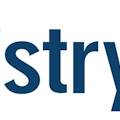AAPHD responds to ADA report on study of alternative dental providers
The American Association of Public Health Dentistry has reviewed the released report of the American Dental Association; Study of Alternative Dental Providers Five State Comparison Summary Report.
AAPHD strongly supports the development and use of evidence in clinical practice, dental public health, and public policy.
Related information, click here.
Unfortunately, the ADA report has several limitations and methodological flaws and does little to advance our understanding of the actual economic impact of mid-level providers on practices or within a delivery system.
The practice assumptions used in this report are unrealistic and illustrate the issue of low Medicaid rates--which most agree are problematic--but would not be a factor that would impact mid-levels any more than it would impact dental practices.
In addition, given that there are mid-level providers in the U.S. dental care delivery system, AAPHD is disappointed that this report did not include such information. It is unclear why information from dental practices in Minnesota and the Alaska Native Tribal Health Consortium that employ mid-level providers was not included in this report. Whenever possible, actual data rather than hypothetical assumptions should be used to frame public policy.
Moreover, although financial viability is an important outcome, it is not the only outcome and certainly not the most important outcome to evaluate. Furthermore, efficiency and effectiveness can only truly be assessed in areas where the mid-level providers are actually employed.
The impact of mid-level providers on enhancing the dental safety net and improving access to dental care cannot be ignored. According to Dr. Edwin Allgair, a dentist in Bethel Alaska, “The access to care for the children in our villages is the positive result of having DHATs.”
In Minnesota where dental therapists recently began practicing, the dental therapists are producing at a much higher rate than that projected in the ADA report.
Another inaccuracy in the ADA report is the assertion that therapists in Minnesota must be supervised on-site or remotely using teledentistry technology.
“It is true that Dental therapists in Minnesota must be supervised on-site; however Advanced Dental Therapists can operate under general supervision and are not required to be at the same location as the supervising dentist. Finally, the assumption using a single operatory setting is not realistic, nor is the one provider to one assistant ratio. Both scenarios demonstrate the least efficient model possible."
According to Sarah Wovcha, executive director of Children’s Dental Services in Minnesota, the only barrier faced in hiring more ADTs is that there are none available to hire since all graduates who are eligible to become dental therapists are currently employed.
Key points:
* AAPHD supports research that expands the current workforce in the U.S., including research on the impact of dental therapists.
* AAPHD believes that the most useful research into the use of midlevel providers will be that which shows the actual impact in dental or other health-care practices.
* AAPHD supports demonstration projects that seek to develop new and innovative ways to deploy an entire dental team toward the goals of improved health, improved care, and reduced costs (triple aim).
* The impact of demand for services and the changing demographic in the U.S. population must be included in order to make accurate predictions about the introduction of any new workforce model. The ADA report falls short in this regard.
* The ADA report, written from a hypothetical viewpoint, concludes that these alternative workforce models are not viable. This is not a just conclusion according to those who currently employ dental therapists in Alaska and Minnesota and who see the benefits of dental therapists firsthand.
* Since actual practice data are available these data should be evaluated to learn what works and to conduct demonstration projects to make all practices better.
* AAPHD supports a research agenda that develops the evidence for improved practices and accurately and objectively assesses the impact of various workforce models in order to demonstrate which models work and which do not work in addressing the access to care crisis and thus improving the oral health of the U.S. population.
For more information, visit www.aaphd.org.
To comment on this topic, go to http://community.pennwelldentalgroup.com.
References available from organization upon request.
